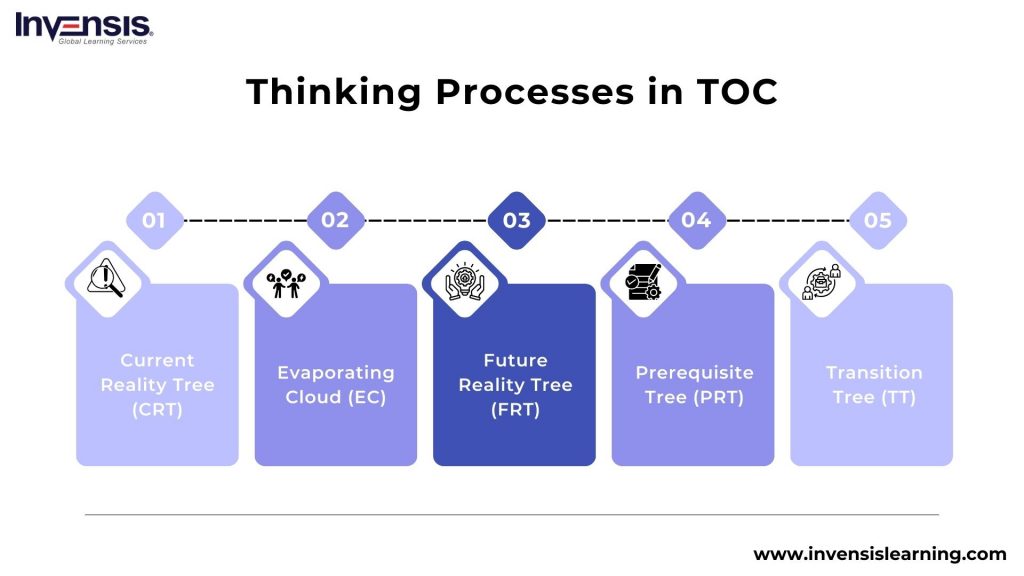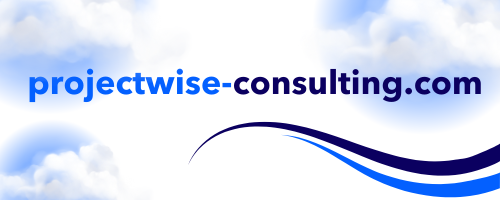

Each mission encounters roadblocks and inevitable obstacles that disrupt timelines, pressure sources, and complicate supply. However what if there was a option to determine the one vital issue slowing all the pieces down and switch it right into a stepping stone for fulfillment? That is the place the Principle of Constraints (TOC) comes into the image, a revolutionary administration philosophy that focuses on figuring out and resolving bottlenecks to optimize efficiency.
In mission administration, TOC presents a structured method to addressing challenges, enhancing workflow, and making certain smoother mission execution. By enhancing the weakest hyperlink in your mission’s chain, TOC allows you to allocate sources successfully, reduce delays, and obtain mission targets confidently. On this weblog, we’ll discover how TOC can streamline your tasks, increase effectivity, and enable you ship outcomes like by no means earlier than.
Desk Of Contents
The Principle of Constraints (TOC) is a administration methodology developed by Dr. Eliyahu M. Goldratt, designed to determine and tackle probably the most vital limiting issue (or “constraint”) inside a system. This constraint is the bottleneck that stops the system from reaching its most potential. The philosophy of TOC is straightforward but highly effective: regardless of how complicated, each system has at the least one constraint that governs its total efficiency. By focusing efforts on assuaging this single constraint, vital enhancements could be made throughout the complete system.
In mission administration, TOC is utilized to streamline workflows, optimize sources, and improve effectivity. It encourages mission managers to shift their focus from managing a number of duties concurrently to prioritizing the duty or course of that creates the largest bottleneck. This focused method resolves delays and ensures smoother and quicker mission completion.
Implementing the Principle of Constraints (TOC) in mission administration can considerably enhance mission execution and outcomes. By specializing in resolving bottlenecks, TOC optimizes workflows and enhances total effectivity.
Listed below are the important thing advantages of making use of TOC in mission administration:
- Focuses on resolving bottlenecks to scale back delays and meet deadlines
- Ensures sources are allotted effectively to vital duties
- Aligns the group’s efforts to handle probably the most impactful constraints
- Reduces errors and inefficiencies for higher mission outcomes
- Streamlines give attention to the first constraint for efficient options
- Minimizes waste and retains tasks inside funds with out compromising high quality
The Principle of Constraints (TOC) is constructed round a scientific course of often called the 5 Focusing Steps, which helps organizations determine and resolve their most vital bottlenecks. This iterative course of ensures steady enchancment by addressing one constraint at a time, finally enhancing the general efficiency of a system. Right here’s a breakdown of every step:


1. Determine the Constraint
Step one in TOC is figuring out the constraint or bottleneck that stops the mission from reaching its targets. In mission administration, this could possibly be something that causes delays or reduces productiveness. It is likely to be a selected group member with an excessive amount of work, an outdated piece of kit, and even inefficient processes like approval steps that take too lengthy. By figuring out the constraint, you give attention to the basis trigger moderately than simply treating the signs, serving to to keep away from wasted time and sources.
2. Exploit the Constraint
When you’ve recognized the constraint, the following step is to take advantage of it. This implies discovering methods to take advantage of the obtainable sources associated to the constraint. Exploiting the constraint doesn’t essentially contain including extra sources or spending cash however moderately enhancing the effectivity of the present system. This might imply reallocating duties, decreasing downtime, or enhancing how the constraint is managed.
3. Subordinate Different Processes
On this step, you might want to subordinate different processes to the constraint. This includes adjusting the complete mission workflow to make sure the constraint isn’t overburdened or overwhelmed. By aligning all different duties, groups, and sources to assist the constraint, you be sure that nothing is slowing down its progress. Non-critical duties or much less essential sources ought to be aligned or delayed to make sure the constraint can work at its peak effectivity.
4. Elevate the Constraint
If exploiting and subordinating to the constraint doesn’t resolve the difficulty, the following step is to raise the constraint. Elevating includes making a extra substantial change to extend the capability or effectiveness of the constraint. This may embrace investing in extra sources, upgrading know-how, or altering processes that aren’t working nicely. By completely addressing the constraint, you stop it from limiting future progress.
5. Repeat the Course of
As soon as the present constraint is resolved, repeat the method. The character of TOC is iterative, which means that resolving one bottleneck usually uncovers one other. By frequently figuring out and addressing new constraints as they emerge, the mission will proceed to enhance over time. This course of ensures that the mission evolves, addressing inefficiencies and enhancing efficiency because the mission progresses.
The Pondering Processes (TP) within the Principle of Constraints (TOC) are logical instruments designed to assist organizations determine, analyze, and resolve systemic issues. These instruments allow mission managers and groups to make higher choices by uncovering the basis causes of points, visualizing conflicts, and creating actionable enchancment plans. The Pondering Processes are notably invaluable in addressing complicated issues the place a number of elements work together, and normal options might fail to ship lasting outcomes.


Right here’s an evidence of the primary Pondering Processes in TOC:
1. Present Actuality Tree (CRT)
The CRT is used to research the present state of a system and determine the basis causes of issues. It maps out all undesirable results (UDEs) inside the mission or group and traces them again to some core points.
How It Works:
- Record all the foremost issues or undesirable outcomes within the mission
- Determine logical connections between these issues to uncover frequent root causes
- Deal with the few vital causes which have probably the most vital affect
2. Evaporating Cloud (EC)
The Evaporating Cloud is a software to resolve conflicts or dilemmas with out compromise. It focuses on difficult the assumptions behind a battle and discovering revolutionary options that fulfill each side.
How It Works:
- Outline the conflicting aims or wants
- Determine the underlying assumptions that trigger the battle
- Query and “evaporate” these assumptions to discover a win-win answer
3. Future Actuality Tree (FRT)
The FRT builds on the insights from the CRT and EC to design a desired future state the place issues are resolved. It reveals how proposed options will tackle the basis causes of points and result in optimistic outcomes.
How It Works:
- Begin with the core answer recognized within the CRT
- Map out the specified outcomes and guarantee they logically observe from the answer
- Examine for any unfavorable negative effects and refine the answer as wanted
4. Prerequisite Tree (PRT)
The PRT identifies the obstacles stopping the implementation of an answer and descriptions the mandatory steps to beat them. It’s notably helpful for the planning and execution phases.
How It Works:
- Record all obstacles to implementing the answer from the FRT
- Outline intermediate aims (IOs) to handle every impediment
- Sequence the IOs to create a transparent implementation plan
5. Transition Tree (TT)
The TT interprets the deliberate answer into actionable steps. It supplies an in depth roadmap for shifting from the present state to the specified future state.
How It Works:
- Break down every intermediate goal from the PRT into particular, actionable duties
- Outline who’s chargeable for every job and set clear deadlines
- Monitor progress and alter as wanted
Throughput Accounting (TA) is a contemporary administration accounting method rooted within the Principle of Constraints (TOC) that focuses on maximizing the movement of worth (throughput) via a system. In distinction with normal accounting strategies that emphasize value discount or allocation, Throughput Accounting prioritizes decision-making primarily based on rising throughput, the speed at which an organization generates cash via gross sales of its services or products.
Key Ideas in Throughput Accounting
This methodology is especially related in mission administration and manufacturing environments, because it aligns monetary metrics with operational effectivity and helps the aim of steady enchancment.
1. Throughput (T)
The speed at which the system generates cash via gross sales. It’s calculated as:
Throughput = Gross sales Income – Complete Variable Prices
Variable prices sometimes embrace direct supplies however exclude mounted prices like labor or overhead.
2. Funding (I)
All the cash is invested in bodily belongings, similar to tools, stock, and services. The funding represents the sources tied up within the system.
3. Working Expense (OE)
The cash spent on operating the system to show stock into throughput. It consists of all mounted prices, similar to salaries, hire, and utilities.
4. Web Revenue (NP)
The monetary achieve in spite of everything working bills are deducted:
Web Revenue = Throughput – Working Expense
5. Return on Funding (ROI)
The ratio of internet revenue to funding displays the effectivity of useful resource utilization.
In mission administration, constraints are limitations or restrictions that affect the execution and supply of a mission. These constraints can originate from numerous sources, similar to sources, stakeholders, know-how, or exterior elements. Figuring out and managing these constraints is essential to make sure mission success and keep away from delays, funds overruns, or high quality points.
Under are frequent examples of constraints encountered in mission administration:
1. Inside Constraint Instance
In a healthcare group, a mission to implement an digital well being document (EHR) system faces delays as a result of firm’s inner approval course of. Each main change should undergo a number of ranges of assessment from division heads and senior management, inflicting approval bottlenecks. This prolonged course of disrupts the well timed execution of key system updates, forcing the group to delay essential phases of the mission. Moreover, the corporate’s inflexible hierarchy limits the mission supervisor’s capacity to make fast choices, slowing progress and decreasing morale.
Influence:
Inside constraints like sluggish approval processes and inflexible hierarchies could cause delays, frustration, and missed deadlines, finally affecting the mission’s success.
2. Useful resource Constraint Instance
A development mission experiences delays on account of a scarcity of expert electrical engineers. The engineers wanted for the mission are both unavailable or dedicated to different tasks. Moreover, the tools required, similar to cranes, is getting used on different websites, additional stalling the mission. Consequently, key duties like website preparation and basis work can’t proceed as deliberate.
Influence:
Useful resource constraints, whether or not associated to personnel, tools, or supplies, trigger delays and decrease effectivity and might enhance prices when work must be rescheduled or sources reallocated.
3. Monetary Constraint Instance
A software program growth firm faces a funds reduce halfway via a mission to construct a buyer relationship administration (CRM) platform. To remain inside funds, the mission supervisor should cut back sure options and select cheaper instruments, which can have an effect on the platform’s high quality and scalability. This monetary limitation additionally results in useful resource reallocation and a possible extension of the timeline.
Influence:
Monetary constraints pressure powerful choices between value, high quality, and scope. These cuts can result in subpar merchandise, delays, and lowered shopper satisfaction.
The Principle of Constraints (TOC) presents a scientific method to figuring out and addressing the vital bottlenecks that impede mission success. By specializing in probably the most vital constraint, TOC permits mission managers to optimize processes, improve effectivity, and guarantee well timed supply inside funds. The five-step course of helps groups scale back delays, reduce inefficiencies, and enhance total efficiency. Implementing TOC permits mission managers to make knowledgeable choices, streamline workflows, and obtain profitable mission outcomes, finally contributing to organizational success.
Prepared to boost your mission administration abilities and apply efficient methods just like the Principle of Constraints? Enroll in Invensis Studying’s Undertaking Administration Certification Programs at this time and take the following step towards mastering your profession!

